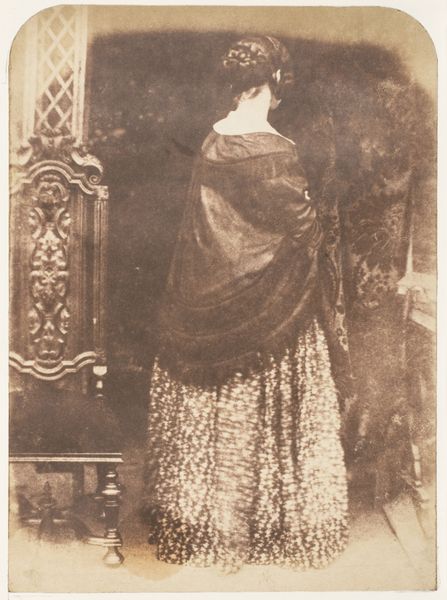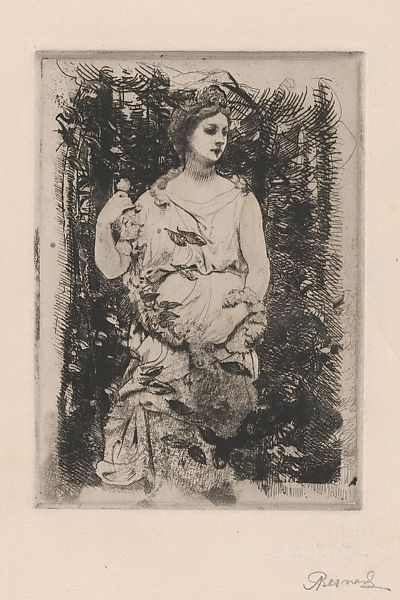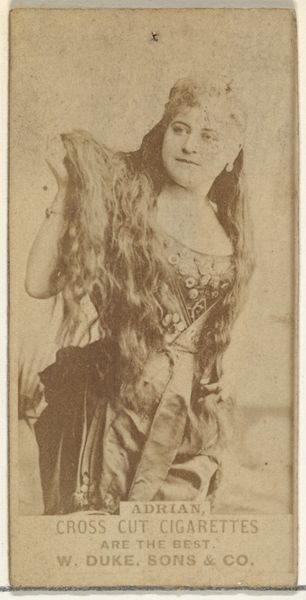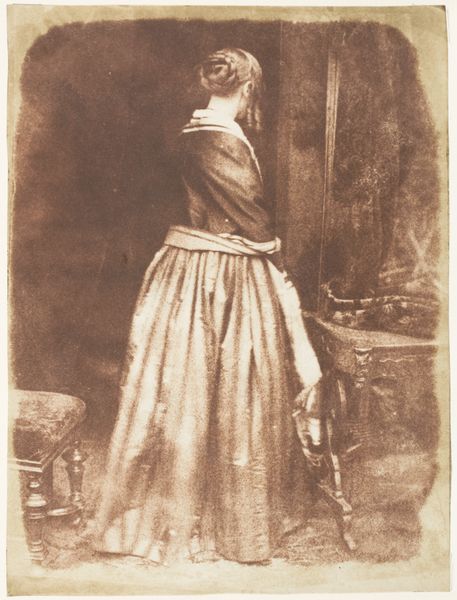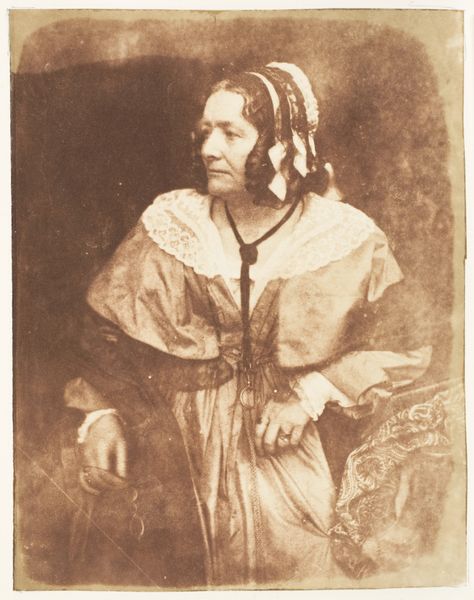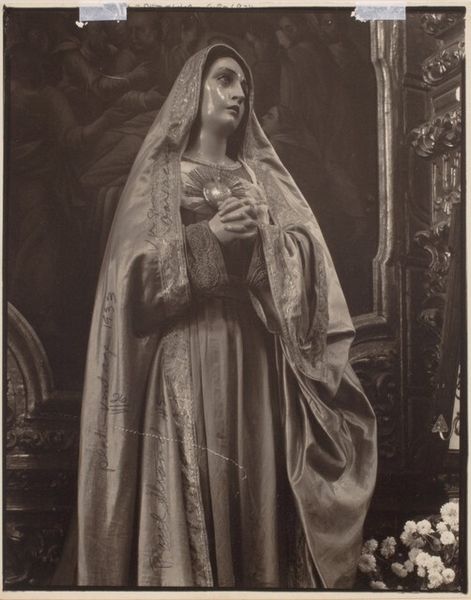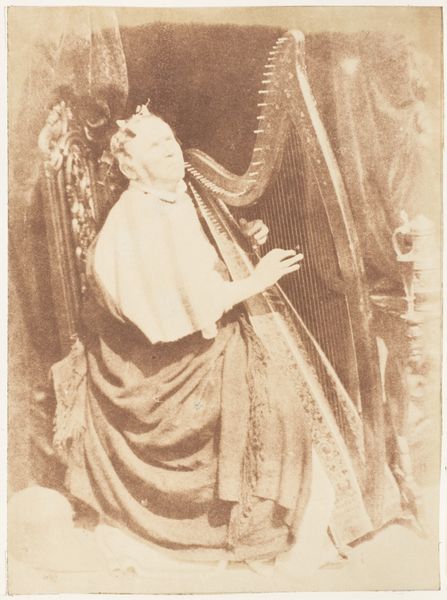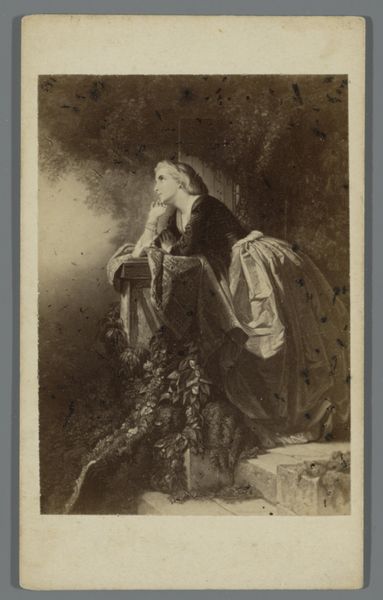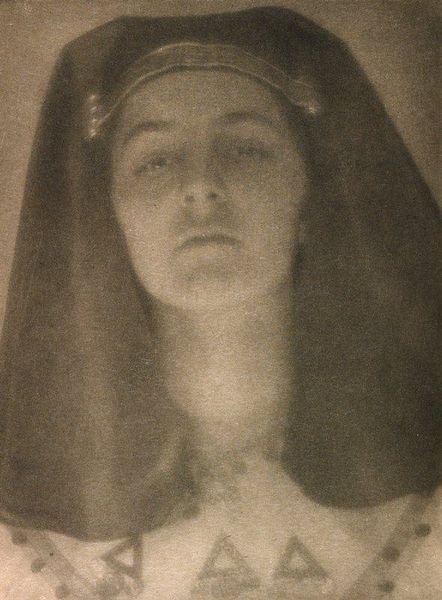
daguerreotype, photography
#
portrait
#
daguerreotype
#
photography
#
romanticism
#
history-painting
Copyright: Public Domain
This haunting image of Miss Kemp as Ophelia was made sometime between 1843 and 1848 by the pioneering Scottish photographers Hill and Adamson. It's a calotype, an early photographic process using paper coated with silver iodide. The calotype was revolutionary, a means of production that democratized image-making. Unlike earlier, more laborious methods, it allowed for multiple prints, each with its own unique tonal range and texture. Look closely, and you can see the paper fibers embedded in the image, adding to its ethereal quality. This process introduced a softer, more painterly aesthetic to photography, a departure from the sharp clarity of the daguerreotype. Hill and Adamson were particularly interested in using photography as a tool for documentation, but here, they used it for staged, dramatic portraiture. The image captures a sense of melancholy, with Miss Kemp embodying the tragic character of Ophelia from Shakespeare's Hamlet. Considering its materials and making helps us see the power of photography not just as a means of capturing reality, but of shaping it.
Comments
No comments
Be the first to comment and join the conversation on the ultimate creative platform.
